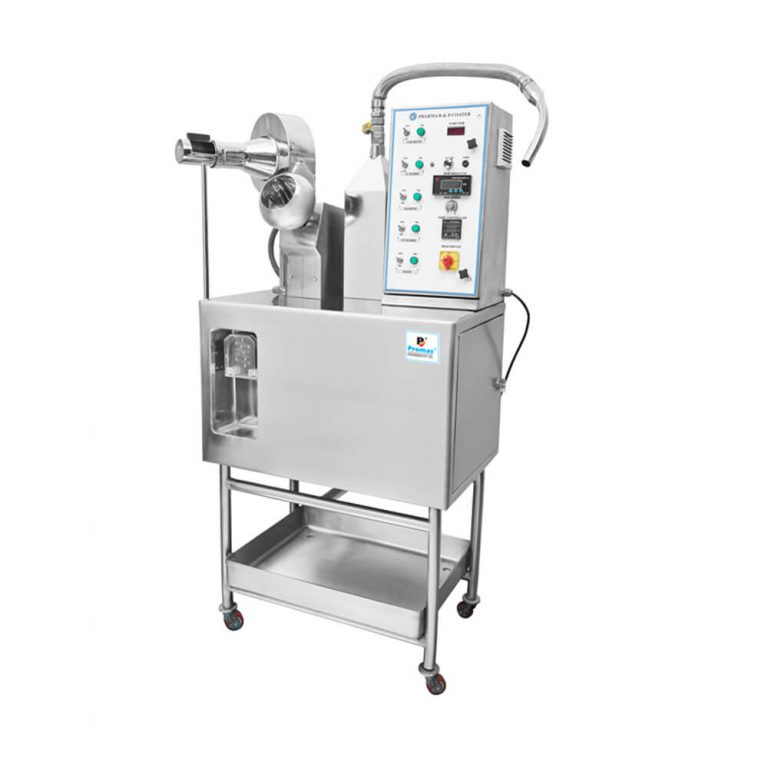Tablet coating is a crucial step in the production of controlled-release tablets. The tablet coating has several benefits, including disguising the medicine’s odour, taste, and colour, providing physical and chemical protection for the drug. Tablet characteristics, coating procedure, and coating composition are the three most important aspects of tablet coating. The tablet coating technique has advanced in recent years.
Conventional coating pans, perforated coating pans, and fluidized bed equipment are the three main types of coating equipment utilised in the film coating process.
a. Standard coating pans
Aspherical, hexagonal, or pear-shaped pan revolves on an inclined axis in the traditional coating pan arrangement. The substrates tumble and make repeated passes through the spray application zone due to the pan’s rotational movement. Heat is blown across the tumbling tablets’ surface, and exhaust air is removed.
Due to the widespread use of the traditional pan at the time film coating was launched, this type of equipment served as the foundation for the film-coating process, with the loss of drying efficiency compensated for by the use of highly volatile organic solvents. To accommodate the aqueous process, several changes were made to the design of the hot air handling equipment. Traditional coating pans with a new design are good examples of such adaptations.
- Sword immersion system
- A system with an immersion tube
- Baffled Pan
b) Coating pans with perforations
A perforated coating pan is made out of a perforated or partially perforated drum that spins in an enclosed housing on its horizontal axis. The equipment was designed to optimise the interaction between the tablet bed and the drying air by drawing air through the tumbling product bed rather than just supplying air to the bed surface. Due to the relative high latent heat of vaporisation of water, which is substantially more than that of the then-popular organic solvents, this was critical to the development of aqueous film coating.
The perforated coating pan has emerged as the design of choice for most film-coating applications (except the film coating of particles such as beads, pellets, and powders, which requires the use of a mesh insert). The installation of properly designed baffles on the pan surface helps to increase mixing efficiency.
c) Equipment for fluidized beds
Fluidized bed equipment is a common alternative to pan coating for coating multiparticulate systems. The equipment can influence the most efficient drying of any product that is now achievable in existing coating equipment.
The objects being coated are suspended in an upward stream of air in a fluid bed arrangement, which maximises the surface area accessible for coating. An atomizer applies the coating, which is then dried by fluidizing air.
A variety of processes, including top spray, bottom spray, and tangential spray, can be used to coat the fluidized material with a film coating.
The tablet coating has several benefits, including covering the medicine’s odour, taste, and colour, giving physical and chemical protection to the drug, and protecting the drug from access to basic sanitation.
The fundamental problems of solvent-based coating are avoided by using magnetically assisted impaction coating and electrostatically dry coating. Compression coating is appropriate for tablet cores that cannot withstand organic solvents, whereas electrostatic coating is appropriate for conductive substrates. Coated tablet flaws are caused by differences in formulation and processing conditions, hence good process development is required. Pan pouring and ladling procedures rely heavily on the operator’s ability and abilities. The pursuit of optimal production efficiency and good product quality remains a major research challenge in the future.
Promas Engineers are the pharmaceutical machinery manufacturer’s in India and supply the best quality machinery including coating pan.


